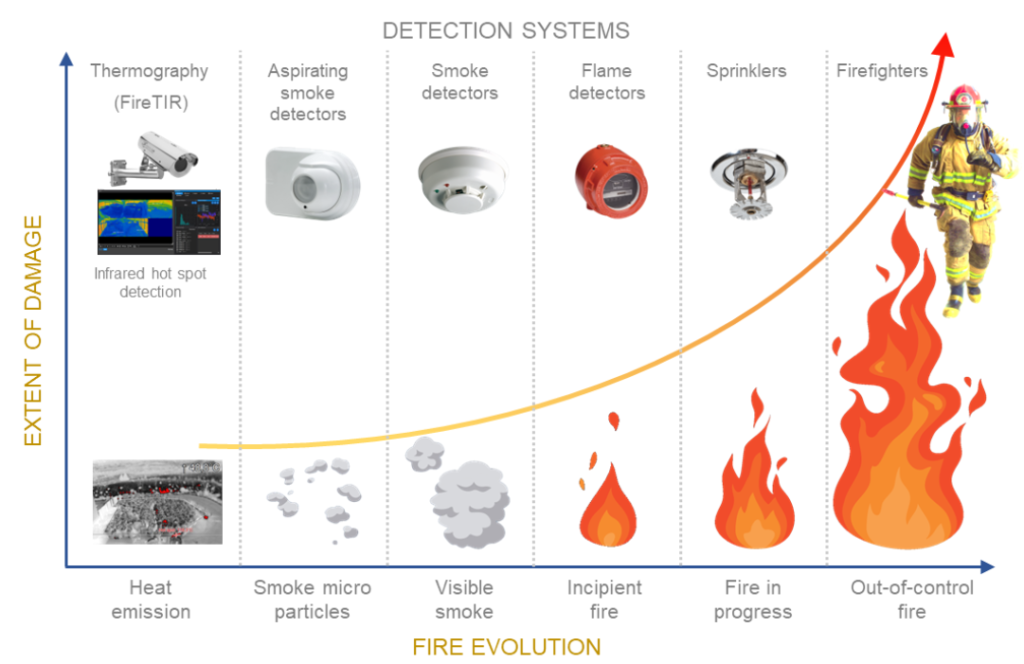Home » Fire Alram » Aspirating Fire Detection

An Aspiration Detection System (ADS), also known as an Aspirating Smoke Detection (ASD) system, is a highly sensitive early warning fire detection technology. It is designed to detect smoke at the earliest stages of combustion, often before visible smoke or flames are present. This makes aspiration systems especially useful in environments where rapid fire detection is critical, such as data centers, server rooms, archives, clean rooms, and high-risk industrial facilities.
Air from the protected environment is continuously sampled and transported through the pipe network to a central detection unit.
The detection unit analyzes the air for smoke particles using laser-based or light-scattering technology, which can detect even minute amounts of smoke. These systems are highly sensitive, capable of detecting smoke at concentrations much lower than conventional smoke detectors.
Once the system detects smoke or particles that indicate combustion, it can trigger alarms at different stages, from early warnings to critical alerts, allowing sufficient time for investigation and intervention.
A series of pipes with strategically placed holes that draw air samples from different parts of the protected area.
This is the heart of the system, containing the fan that pulls air from the environment and the detection chamber where smoke particles are analyzed.
Typically, this uses laser-based or LED technology to detect the presence of smoke. The detection chamber is extremely sensitive and can identify very small smoke particles, which makes these systems much more responsive than traditional smoke detectors.
The system’s brain that processes data from the detection chamber and provides alerts or triggers alarm systems. It may also integrate with a building’s fire alarm or building management system.
To remove dust and larger particles from the air sample, pre-filters are often used to ensure the system only detects smoke, not dust or other contaminants.
© 2024 gk-solution.com , All rights reserved.